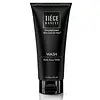What's inside
What's inside
 Key Ingredients
Key Ingredients

No key ingredients
 Benefits
Benefits

 Concerns
Concerns

 Ingredients Side-by-side
Ingredients Side-by-side

Water
Skin ConditioningAlcohol Denat.
AntimicrobialGlycerin
HumectantButylene Glycol
HumectantDipropylene Glycol
HumectantDiphenylsiloxy Phenyl Trimethicone
Skin ConditioningXylitol
HumectantDiethylhexyl Succinate
EmollientDimethicone
EmollientSilica
AbrasiveErythritol
HumectantPEG/PPG-14/7 Dimethyl Ether
Skin ConditioningPhenoxyethanol
PreservativeBehenyl Alcohol
EmollientTriethanolamine
BufferingCarbomer
Emulsion StabilisingBatyl Alcohol
EmollientPEG/PPG-17/4 Dimethyl Ether
Skin ConditioningTocopheryl Acetate
AntioxidantPhytosteryl/Octyldodecyl Lauroyl Glutamate
Skin ConditioningParfum
MaskingAcrylates/C10-30 Alkyl Acrylate Crosspolymer
Emulsion StabilisingTrisodium EDTA
Polyquaternium-51
Skin ConditioningAlcohol
AntimicrobialLauryl Betaine
CleansingOryza Sativa Germ Oil
EmollientLimonene
PerfumingHydrogenated Lecithin
EmulsifyingAngelica Acutiloba Root Extract
Skin ConditioningLinalool
PerfumingCinnamomum Cassia Bark Extract
MaskingOryzanol
Skin ConditioningCamellia Japonica Seed Extract
Skin ConditioningPerilla Ocymoides Leaf Extract
TonicSodium Benzoate
MaskingTocopherol
AntioxidantWater, Alcohol Denat., Glycerin, Butylene Glycol, Dipropylene Glycol, Diphenylsiloxy Phenyl Trimethicone, Xylitol, Diethylhexyl Succinate, Dimethicone, Silica, Erythritol, PEG/PPG-14/7 Dimethyl Ether, Phenoxyethanol, Behenyl Alcohol, Triethanolamine, Carbomer, Batyl Alcohol, PEG/PPG-17/4 Dimethyl Ether, Tocopheryl Acetate, Phytosteryl/Octyldodecyl Lauroyl Glutamate, Parfum, Acrylates/C10-30 Alkyl Acrylate Crosspolymer, Trisodium EDTA, Polyquaternium-51, Alcohol, Lauryl Betaine, Oryza Sativa Germ Oil, Limonene, Hydrogenated Lecithin, Angelica Acutiloba Root Extract, Linalool, Cinnamomum Cassia Bark Extract, Oryzanol, Camellia Japonica Seed Extract, Perilla Ocymoides Leaf Extract, Sodium Benzoate, Tocopherol
Water
Skin ConditioningAmmonium Lauryl Sulfate
CleansingDisodium Cocoamphodipropionate
CleansingCoconut Oil Aminoethoxyethanol Amides
FoamingC32-36 Isoalkyl Stearate
EmollientGlycol Distearate
EmollientGlycerin
HumectantCetearyl Alcohol
EmollientPolysorbate 60
EmulsifyingSodium Chloride
MaskingPhenoxyethanol
PreservativeCaprylyl Glycol
EmollientSalix Alba Bark Extract
AstringentCucumis Sativus Fruit Extract
EmollientCitric Acid
BufferingAcrylates/C10-30 Alkyl Acrylate Crosspolymer
Emulsion StabilisingLavandula Hybrida Oil
EmollientEucalyptus Globulus Leaf Oil
PerfumingWater, Ammonium Lauryl Sulfate, Disodium Cocoamphodipropionate, Coconut Oil Aminoethoxyethanol Amides, C32-36 Isoalkyl Stearate, Glycol Distearate, Glycerin, Cetearyl Alcohol, Polysorbate 60, Sodium Chloride, Phenoxyethanol, Caprylyl Glycol, Salix Alba Bark Extract, Cucumis Sativus Fruit Extract, Citric Acid, Acrylates/C10-30 Alkyl Acrylate Crosspolymer, Lavandula Hybrida Oil, Eucalyptus Globulus Leaf Oil
Ingredients Explained
These ingredients are found in both products.
Ingredients higher up in an ingredient list are typically present in a larger amount.
Acrylates/C10-30 Alkyl Acrylate Crosspolymer is a synthetic polymer. It is used to thicken and improve the texture of products. Due to its properties, it can prevent water and oil ingredients from separating.
Glycerin is already naturally found in your skin. It helps moisturize and protect your skin.
A study from 2016 found glycerin to be more effective as a humectant than AHAs and hyaluronic acid.
As a humectant, it helps the skin stay hydrated by pulling moisture to your skin. The low molecular weight of glycerin allows it to pull moisture into the deeper layers of your skin.
Hydrated skin improves your skin barrier; Your skin barrier helps protect against irritants and bacteria.
Glycerin has also been found to have antimicrobial and antiviral properties. Due to these properties, glycerin is often used in wound and burn treatments.
In cosmetics, glycerin is usually derived from plants such as soybean or palm. However, it can also be sourced from animals, such as tallow or animal fat.
This ingredient is organic, colorless, odorless, and non-toxic.
Glycerin is the name for this ingredient in American English. British English uses Glycerol/Glycerine.
Learn more about GlycerinPhenoxyethanol is a preservative that has germicide, antimicrobial, and aromatic properties. Studies show that phenoxyethanol can prevent microbial growth. By itself, it has a scent that is similar to that of a rose.
It's often used in formulations along with Caprylyl Glycol to preserve the shelf life of products.
Water. It's the most common cosmetic ingredient of all. You'll usually see it at the top of ingredient lists, meaning that it makes up the largest part of the product.
So why is it so popular? Water most often acts as a solvent - this means that it helps dissolve other ingredients into the formulation.
You'll also recognize water as that liquid we all need to stay alive. If you see this, drink a glass of water. Stay hydrated!
Learn more about Water